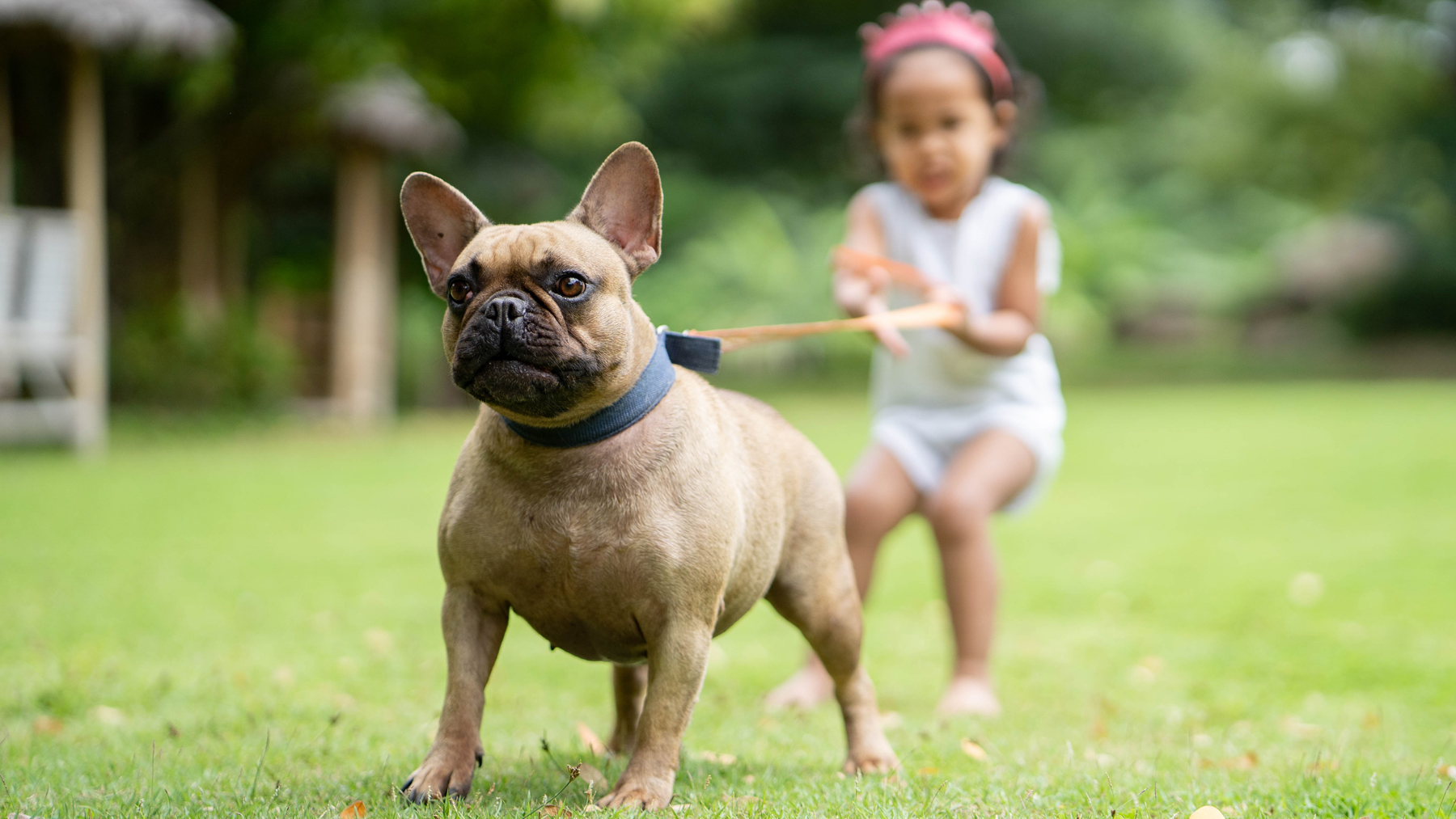Dog trainer shares three impactful ways to prevent leash pulling - and they're very easy!
Teaching a dog not to pull on the leash can be exhausting but once you master it, walks will become much more fun

If you’re trying to teach your dog how to behave better on the leash but are having little to no luck, don’t give up. Leash pulling can make walking your dog feel like a chore, and a very strenuous one depending on the size and power of your pooch.
If you love playtime with your dog and are always mucking around with them and some of the best puppy toys then they’ve perhaps gotten too used to that playful side of your relationship and don’t obey you while out for walks. Or you might just be using the wrong kinds of force to teach them how to walk nicely on a leash and some gentle nudges of discipline on your walks could make a world of difference.
Thankfully, the head dog trainer at the Dog Father Dog Institute (DFDI) has shared his three top tips for improving a canine’s behavior on a walk and putting a stop to persistent pulling on the leash. Go ahead and watch his video before reading on…
@dogfather360 ♬ Lofi Vibes - Gentle State
Alexander from DFDI dog training says that his three leash walking tips will 'change the game for your walks'. With that being said let's get right into his snippets of advice.
1) No bundling up
Number one is to avoid bundling up the leash in your hands. "Do not bundle up your leash in the expectation that you’re going to teach a dog to not move from that spot," explains Alexander, "You’re creating a tense mind and therefore a tense body."
If your dog catches on to any hostility from you they'll most likely mirror that. Avoid using excessive force, keep things calm, and only take a bigger grip on the leash when your dog is getting out of control on the leash.
PetsRadar Newsletter
Get the best advice, tips and top tech for your beloved Pets
2) Don't allow them to cross sides
Alexander says in his video, "Notice I do not allow my dog to cross sides freely. I’m not going to yank him back to the other side, I want to guide him to that side. But once I have that attention, I can now release them to sniff on the side they were interested in."
Rather than assert control aggressively using the leash, you just want to show them where you would like them using gentle guidance.
3) Recall them at the right time when they are sniffing
This one might be a little controversial as some owners allow unlimited time for their dogs to sniff and others like to limit it. Do you know why you should let your dog sniff on a walk? There are many reasons but it allows your pup to establish their environment and can lower stress levels.
Alexander suggests a general rule of thumb of saying five to 10 Mississippis before moving your dog on. He does note, "This can differ from dog to dog so don’t come at me in the comments section. However, I will break my dog’s attention with a little recall and then we will keep the momentum of the walk moving."
All dog trainers vary in experience and qualifications so it's always important to note this when taking advice from trainers online. If you are experiencing particularly challenging behavior with your dog then seeking one on one help from a certified trainer is where you should begin.
PetsRadar also shares lots of deeper dive advice stories that include input from certified dog trainers and vets. For example, you can read up on commonly asked questions like why does my dog eat fast and signs your dog is getting old.

With over a year of writing for PetsRadar, Jessica is a seasoned pet writer. She joined the team after writing for the sister site, Fit&Well for a year. Growing up with a lively rescue lurcher kindled her love for animal behavior and care. Jessica holds a journalism degree from Cardiff University and has authored articles for renowned publications, including LiveScience, Runner's World, The Evening Express, and Tom's Guide. Throughout her career in journalism she has forged connections with experts in the field, like behaviorists, trainers, and vets. Through her writing, Jessica aims to empower pet owners with accurate information to enhance their furry companions' lives.
